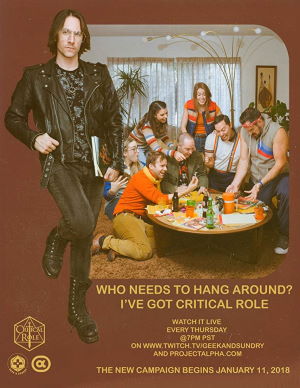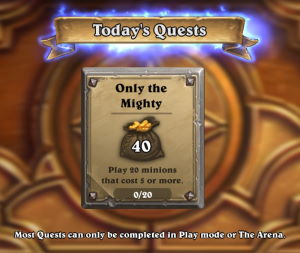..through “unproductive” means.
With the global pandemic keeping people in their homes for weeks, I got around to thinking what I, as a person who had experienced months/years long stretches of unemployment, would suggest people do to pass the time without going outside.
Some quick maths:
Let’s assume 8 hours of sleep as there’s no reason to skimp on that when you’re on lockdown. Then 2 hours minimum for daily rituals – eating, bathing, laundry (assuming the whole household shares the chores), etc.
14 hours a day, multiplied it by 31 and we get 434 hours which could be rounded down to 400 hours.
So what can eat up 400 hours?
This leads us to why I had to add “unproductive” as a restriction: learning and practicing new skills can easily eat up all of those 400 hours as long as you have the passion and drive to work through the learning humps along the way. Similarly, time will quickly pass by if you use your own existing skills to create something you’ve always wanted but didn’t have the time before. Heck, mundane stuff like cleaning your room can take longer than you expect.
On the other end of the spectrum, I had to add the “” to exclude the most unproductive activities, namely spending all day on social networks and pollute your mind with fake news/outrage about the pandemic. Though after writing that down, I guess this would also include watching the mainstream news which has by now degraded to “all the clickbait about COVID-19 that you want to see”.
Anyway, back to the question at hand…
—
Computer gaming is an obvious answer. You can spend thousands of hours on your favorite game/genre, just ask any MOBA or Battle Royale player.
It’s 2020, though: video game developers have figured out that the limiting factor for most gamers isn’t money or hardware – it’s the fact that people only have less than 5 hours of free time a day. This limited nature can be exploited to enticing people to spend money rather than grind in-game for rewards.
But now you have people with a lot of free time on their hands and no reason to spend cash on non-essential things.
Long story short, you can take advantage of this exploitative trend and easily consume an entire day just by fulfilling the “daily” and “weekly quests” of 5 free-to-play/gacha/lootbox/microtransaction games.
Maybe you’re not keen on supporting money-grubbing game publishers that overuse these tricks. Or maybe you’re not confident that you’ll have stable internet for the next few months. What else can you play aside from online games and gacha?
- Crafting/exploring games like Minecraft and Terraria
- Simulation games that are not quite the same as the above eg. Cities Skylines, Stardew Valley, RimWorld, and Factorio
- High learning curve and janky games e.g. Dwarf Fortress, pretty much every game with a SsethTzeentach video
- Rogue-likes and other games built on replayability e.g. Darkest Dungeon, Slay the Spire, and Risk of Rain
- JRPGs average around 50 hours, with some taking up to 100 or more. Go dig up your PS2 and borrow Persona 3 FES and Persona 4 from a (hopefully uninfected) friend
- I know it’s a simulation game, but the Civilization series deserve special mention as the archetypal 4X “One more turn” game. Civ III and Civ IV are cheap, while Freeciv (open source game based on Civ I) is free for download. You can even play the latter on your browser.
—

Apart from gaming, the next obvious choice is streaming. Go clear your “To Watch” backlog then let the algorithm suggest new stuff for you.
If paying for a monthly subscription isn’t for you, there’s always YouTube. In fact, when I asked myself what can eat up 400 hours, the first thing that came to mind was Critical Role.

Critical Role is a weekly web show “where a bunch of nerdy-ass voice actors play Dungeons and Dragons”. Episodes average around 4 hours long and they just recently hit their 5 year mark. This gives you over 700 hours of content even if you skip the intros and breaks.
However, I didn’t mention Critical Role earlier due to a couple of reasons. First off, gaming is arguably more engaging for many people than simply watching something.
More importantly, though, it’s a very niche recommendation.
If you’re familiar with tabletop role playing games, it has a good chance of hooking you as it shows what top-tier RPG gaming looks like, something that has always been described in books or articles but never been seen on video before. The cast being voice actors also add another layer to the show; they may not be A-list or even C-list celebrities, but you’ve probably heard some of them in your favorite video games, cartoons, or dubbed anime. Their acting chops also mean that they often stay in-character in critical moments, further enhancing the immersion.
That said, if you have no interest in TRPGs nor do you care about voice acting, Critical Role’s probably not for you.
Even not counting CR, your average YouTube content creator who has been constantly uploading content for over 5 years will have at least a hundred hours of content. Find a channel that talks about something that interests you, watch a few of their videos then binge the rest if they suit your palate.
Here’s a small sample of the channels I’ve binged in the past few years:
- RedLetterMedia – initially popular for the then-groundbreaking Plinkett reviews, they’ve followed it up by posting movie reviews and doing bad movie viewings. While pretty much every movie review channel does the same thing, they stand out by being professional (sort-of) filmmakers themselves giving them insights into movie making that the others don’t. They also prefer to be consistent rather than worry about trivial stuff like subscriber counts.
- Bon Appétit – formerly just an obligatory YouTube channel for a respected food magazine, a couple of hit “shows” with clever editing (It’s Alive with Brad, Gourmet Makes) transformed it into a “The Office“-like sitcom, with editors, writers, test kitchen staff, and production crew as the “cast”. It’s still a good cooking channel underneath, but everyone’s really after the meta-icing on the top.
- Forgotten Weapons – there are gun channels, those that examine guns, take them apart, and shoot them. And there are history channels. But there are only a few gun history channels, ones that talk about both guns and their role in the history of warfare. What’s great about this channel is that while Ian McCollum can be subjective in describing guns and how they feel when shooting, he’s very objective in their politics and history.
- Brady Haran’s educational video channels – other science channels present either bite-sized summarized content or very verbose discussions. Brady’s content tends to hover around the sweet spot – not too short that other points are glossed over, but not too long that it gets boring/repetitive.
- I used to watch Let’s Play channels like Game Grumps, but I can’t recommend them anymore as most of them have trouble with juggling being entertaining and actually playing the game. Nowadays, I’d rather watch highlight videos for entertainment (eg. TheRussianBadger) or speedruns/edited long plays for gameplay.
Before I move on to the last option, I have to mention that “sailing the high seas” is definitely an alternative to streaming series and movies, especially those not available in local streaming services. Sure, it can be legally ambiguous, but if your internet breaks down and there aren’t any available repair techs in your area due to the quarantine, you’d be glad to have gigabytes of locally stored media to stave off boredom.
—
“Written work” wraps up this list of obvious time eating options.

E-books are reasonably cheap and I won’t be surprised if Amazon and other e-book companies offer discounts in these trying times. You can also legally get free e-books in sites like Project Gutenberg.
Then there’s web novels, self published work where writers upload chapters one at a time. While we’re at it, let’s include fanfiction which follow the same format.
Literary snobs may scoff at these two as they often lack proper editing and, to put it bluntly, most of them are shit. But I have to include them here because of their length.
The average person can leisurely read about 100,000 words a day, maybe 200,000 if totally focused on the text. With the average fantasy/sci-fi paperback running around 100,000 words, you can finish one novel in a day or two.
Web serials can run in the millions, easily matching their published book series counterparts. For example, Worm clocks at 1.68 million words. You can spend weeks bingeing on web serials and there will still be content to read.
Written media’s biggest advantage over the previous two is it’s size: you can fit more novels in the same space as TV series, movies, or (non-retro) games. Spotty internet won’t bother you as much as in the other options.

We can’t talk about written work without talking about comics. They sit between what’s generally accepted as written work/literature and movies/TV series. They don’t have the small data footprint of the former, but with proper compression techniques, a single TV episode can be equivalent to a dozen graphic novel volumes.
I won’t go into too much detail about them apart from pointing out that you can get comics and manga the same way as other written work: through online stores, free legal online readers, self-published web comics, legally gray sites and downright illegal means.
—
And that’s my list. In hindsight, all of these are too obvious, and you probably will be doing a combination of these three, hopefully with some “productive” stuff in between.



